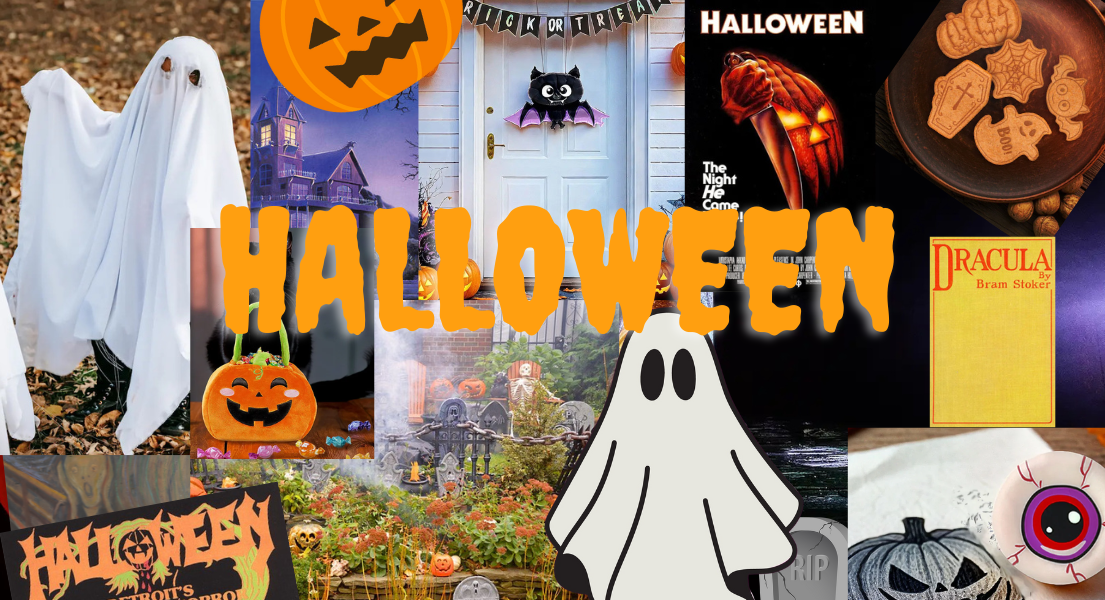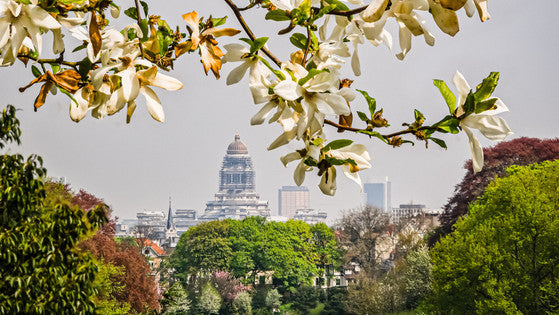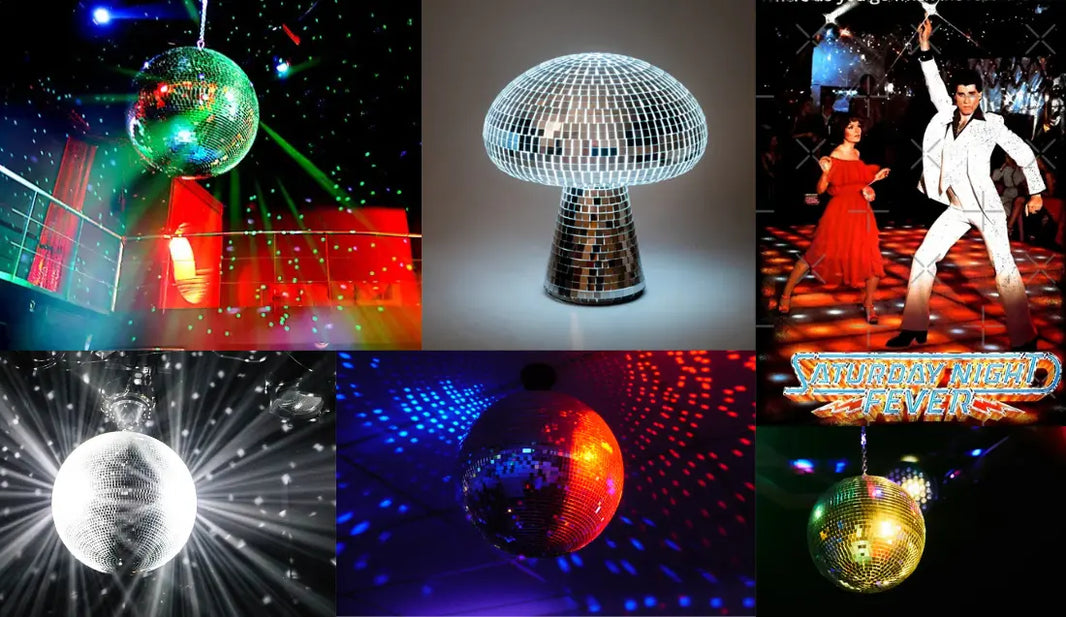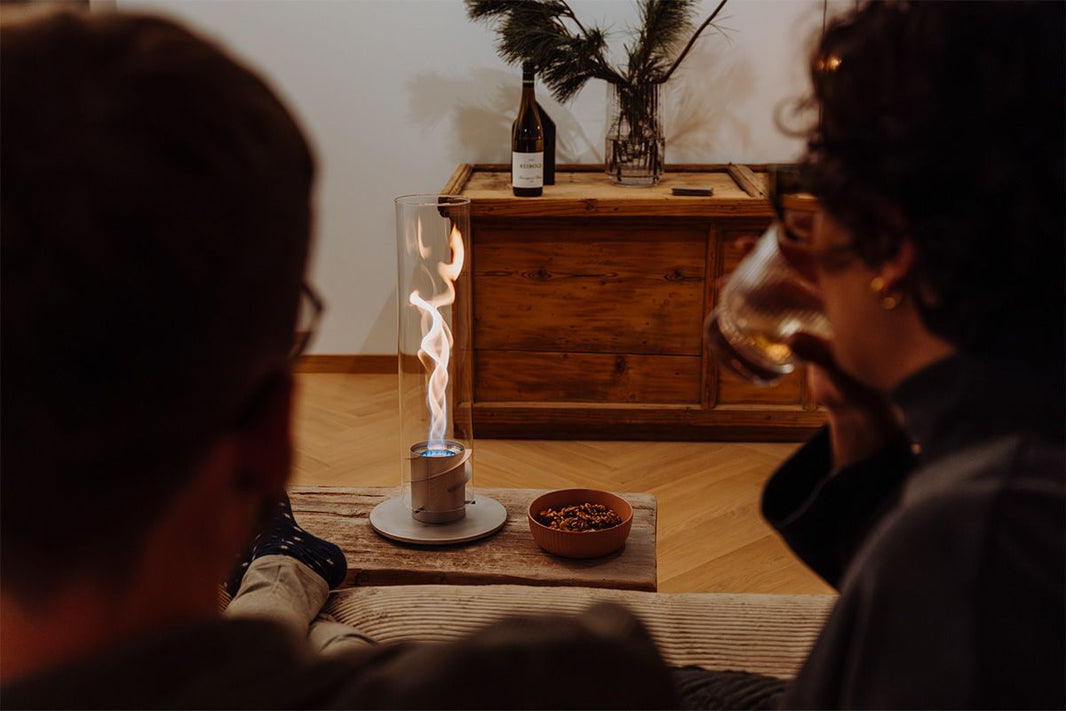What is the origin of Halloween?
Halloween, a holiday now widely associated with costumes, candy and carved pumpkins, has its roots in ancient traditions. Ghosts, witches and pumpkins, let's dive into the origins and cultural impact of the best holiday of the year!

Discover our Halloween selection now.
What is the story of Halloween?
The history of Halloween dates back more than 2,000 years and is deeply rooted in Celtic, Christian and European traditions. According to historians, it is an evolution of the festival of Samhain, very important for the Celtic peoples.
Celtic Origins: The Festival of Samhain
According to many historians, Halloween has its roots in Samhain , an ancient pagan festival celebrated by the Celts. The festival of Samhain lasted for a week, ending on the night of October 31. It marked the end of the harvest season and the beginning of winter, a time often associated with death.

For the Celts, this period symbolized a passage in the year. The border between the world of the living and that of the dead became permeable, allowing spirits to return to Earth. To protect themselves from these spirits and bad influences, people lit bonfires, wore costumes and made offerings to the deities. 🔥

Will-o'-the-wisps have been associated with Jack-o'-lanterns and Halloween legends since ancient times.
Do you love Halloween? Discover our selection of Halloween items now!
The legend of Jack-o'-lantern 🎃
The legend of Jack-o'-lantern is an old Irish story that tells the origin of the famous carved pumpkins of Halloween.
It features a character named Stingy Jack, a cunning and manipulative man who tricked the devil himself, but paid a terrible price for his actions.
 The pumpkin is the modern representation of Jack-o'-lantern.
The pumpkin is the modern representation of Jack-o'-lantern.
- A first encounter with the Devil
According to legend, Jack was a drunkard, cunning and selfish man, known for his bad behavior.
One day he met the devil in a pub and pushed him around. The devil tried to convince Jack to give him his soul in exchange for demonic favors. 😈
Before accepting the offer, Jack asked the Devil to buy him one last drink. The Devil agreed and turned into a coin, but instead of using the coin to pay, Jack quickly slipped it into his pocket where he kept a silver cross. Trapped by the cross, the Devil could not return to his original form.
Jack took advantage of the situation to negotiate: he agreed to release the devil on condition that he grant him ten years of respite, without being able to claim his soul. The devil accepted the deal.

- Second meeting with the Evil One
Ten years later, the devil returned to claim Jack's soul. Through a trick, Jack once again managed to trap the Devil who had to accept a new deal.
Jack made him promise that he would never take his soul, to which the devil agreed. - Jack's fate after his death
Years later, Jack died. Because of his sins and selfish life, he was denied entry to Heaven.
He then went to Hell, but the Siable, faithful to his promise never to take his soul, also refused him entry!
Lost between worlds, Jack asked the devil where he should go. In response, the devil threw him a piece of hot coal.
Jack put the coal in a hollowed-out turnip , and from that day on it wandered endlessly. He was then called Jack of the Lantern , or Jack-o'-lantern . 🎃 Stingy Jack with his famous lantern by artist Jovan Ukropina
Stingy Jack with his famous lantern by artist Jovan Ukropina
Many Halloween symbols have their roots in practices associated with Samhain, but they have been widely reinterpreted.
Halloween is born from such a mixture of traditions, beliefs, transformations over the centuries - notably with the arrival of Christianity - that it is difficult to establish its precise origin.

Ireland is considered the birthplace of the famous festival, although its links with the ancestral celebration are distant.
Christian influences: All Saints' Day and All Souls' Day
In the 8th century, the Catholic Church, under Pope Gregory III, moved the feast of All Saints ' Day to November 1, and the day before, October 31, became All Hallows' Eve , which later evolved into Halloween .
This change was intended to " Christianize " certain pagan festivals, such as Samhain, by incorporating religious elements.
 All Souls' Day is an opportunity for Christians to pay their respects at the graves of their deceased loved ones.
All Souls' Day is an opportunity for Christians to pay their respects at the graves of their deceased loved ones.
November 2 was also dedicated to the Day of the Dead (All Souls' Day), when worshipers prayed for the souls of the deceased, reinforcing the connection between Halloween and spirits.
Do you love Halloween? Discover our selection of Halloween items now ! 🪦
The Arrival of Halloween in America
Halloween was brought to the United States in the 19th century by Irish and Scottish immigrants, often fleeing the Irish Potato Famine.
They brought with them the traditions associated with Samhain, including the custom of carving turnips into lanterns to ward off evil spirits.
Once in America, turnips were replaced by pumpkins, more abundant and easier to carve on this side of the Atlantic, giving rise to the famous Jack-o'-lanterns . 🎃

Modern Halloween: Costumes and Festivities
It was in the early 20th century that Halloween began to develop as a holiday more focused on children and less on superstitions and spiritual beliefs.
This transformation was largely influenced by the rise of the American middle class and the desire to make the holiday more accessible and less frightening for families.
The development of Halloween
The concept of trick -or-treating gained momentum in the 1920s and 1930s, due to various European traditions related to collections and offerings. Children would dress up in costumes and go from door to door, asking for treats or money. 🦇

Trick-or-treating is a staple of Halloween, although the practice has evolved greatly.
During this period, the holiday also saw the emergence of costume parties , haunted house decorations, and stories about witches, ghosts and monsters.
The commercialization of Halloween began in earnest after World War II, with the production of candy, costumes, and decorations specifically for the holiday.
 One of the key factors in the spread of Halloween around the world is its commercialization.
One of the key factors in the spread of Halloween around the world is its commercialization.
Beginning in the 1980s , Halloween gradually spread outside the United States, particularly through the influence of American mass culture . Here are some of the stages of this diffusion:
Canada : In Canada, Halloween quickly followed a similar trajectory to that of the United States, mainly due to geographic proximity and cultural exchange.
 Haunted houses have quickly become inseparable from the world of Halloween.
Haunted houses have quickly become inseparable from the world of Halloween.In Ireland, the holiday gained popularity under the influence of American practices, although some local customs remain.

Major cities now hold Halloween parties, and retailers offer products associated with the holiday.
In France, for example, Halloween boomed in the 1990s, although enthusiasm for it has fluctuated.
Today, Halloween is celebrated in many countries around the world.
Although it has lost much of its religious or spiritual significance, Halloween remains a celebration marked by the playful exploration of our fears, the creativity of costumes and a strong community dimension.
Criticism of Halloween
Over the years, criticism has begun to be raised about the holiday of Halloween. This criticism comes from a variety of sources, ranging from religious concerns to cultural and commercial issues.
Here are the main reasons why Halloween is criticized:
Concerns about Satanism:
Some critics, primarily in evangelical or fundamentalist Christian communities, believe that Halloween glorifies occult or devilish themes.
In the United States, some religious groups hold " Harvest Festivals " as an alternative to Halloween, featuring family-oriented activities, often without the scary costumes.
 Halloween is much criticized for its commercial aspect and macabre costumes.
Halloween is much criticized for its commercial aspect and macabre costumes.
Halloween is also widely criticized for its excessive commercialization . What was originally a holiday based on spiritual or community traditions has become, in many countries, an event centered on the consumption of products, decorations, costumes and candy.
Halloween Decorations
Halloween decorations are essential to creating a spooky and festive atmosphere during this celebration. They draw on the macabre, supernatural and spooky imagery associated with the holiday.
Here's a look at some of the most common Halloween decorations and their symbolism:
- Pumpkins 🎃: directly inspired by Jack-o'-lanterns , they were supposed to ward off evil spirits, while their grotesque faces reinforced the sinister aspect of the holiday.

- Skeletons and skulls and tombstones 💀: Skeletons, skulls and tombstones are often used to decorate homes and gardens. They obviously symbolize death.

- Ghosts 👻: Often depicted as floating white sheets, they are omnipresent in Halloween decorations.
They refer to the idea that the souls of the dead come back to haunt the living during this period when the boundaries between worlds are blurred.
- Bats and spider webs 🦇:
Bats, nocturnal creatures, have been associated with witchcraft and vampires in the collective imagination.
While spiders and their webs are traditionally associated with abandoned places, symbols of danger and mystery.
Do you love Halloween? Discover our selection of Halloween items now !
Many other decorations are also present during this spooky holiday, such as candles and candlesticks; and anything that might refer to the imagery of haunted houses and castles.

Halloween costumes
Halloween costumes are one of the most iconic traditions of this holiday, allowing everyone to embody scary and fantastical characters.

Among the most common costumes are the famous ghosts 👻, often personified by a simple white sheet with holes for the eyes. But also witches, vampires, mummies, skeletons and clowns. (Impossible to be totally exhaustive here.)
 The white sheet of the ghost floating in the void could symbolize the shroud of the deceased, always covering the latter. (Timeless disguise!)
The white sheet of the ghost floating in the void could symbolize the shroud of the deceased, always covering the latter. (Timeless disguise!)
Halloween in the Arts and Popular Culture
American popular culture has shaped the image of Halloween as a scary night, full of mysteries and supernatural creatures.
These representations have been widely disseminated through television, films and later, series and video games.
Interested in Pop Culture? Check out my article on Pop Culture now.
Halloween at the cinema
Creating Horror Icons: Characters from horror films have become iconic figures of Halloween.
For example, monsters like Frankenstein, Dracula, the werewolf or the Mummy have become recurring figures in Halloween costumes, decorations and imagination. 🕸️  American cinema, in particular, has played a decisive role in the diffusion of Halloween on a national and international scale.
American cinema, in particular, has played a decisive role in the diffusion of Halloween on a national and international scale.
Beginning in the 1970s and 1980s, films such as John Carpenter's " Halloween " (and its soundtrack) (1978) created inseparable links between the holiday and the horror genre.  " Friday the 13th " (1980) and " A Nightmare on Elm Street " (1984) helped strengthen the links between the holiday and horror.
" Friday the 13th " (1980) and " A Nightmare on Elm Street " (1984) helped strengthen the links between the holiday and horror.
Watching horror movies on Halloween has also become a real tradition for many people, who seek to immerse themselves in an atmosphere of terror, in keeping with the dark and supernatural themes of the holiday.
Do you love Halloween's cult monsters? Discover our selection of Halloween items now !
The influence of literature on Halloween
Gothic literature, which emerged in the late 18th and early 19th centuries, was one of the first genres to explore horror and supernatural themes, creating a strong foundation for the Halloween aesthetic.
 Frankenstein's creature, here in its 1931 film version, is one of the most recognizable figures in the Halloween universe.
Frankenstein's creature, here in its 1931 film version, is one of the most recognizable figures in the Halloween universe.Horace Walpole's " The Castle of Otranto " (1764) , Mary Shelley's " Frankenstein " (1818), Bram Stoker's " Dracula " (1897), and the many works of Edgar Allan Poe are often cited for their contributions to the imagery of Halloween.
 Many works have fed the imagination of the festival by integrating supernatural creatures, ghosts and gothic landscapes.
Many works have fed the imagination of the festival by integrating supernatural creatures, ghosts and gothic landscapes.
These stories influenced the visual aesthetics, practices (such as telling scary stories) and atmosphere of this holiday which celebrates fear, death and mystery.

Illustration for the short story "Premature Burial" by Edgar Allan Poe.
Halloween and the Visual Arts
Although film and literature have played dominant roles in the evolution of the Halloween imaginary, certain pictorial works, notably dark romanticism, symbolism, and artistic movements exploring themes of death, horror and fantasy, have also left their mark.
Some famous paintings include " The Nightmare " (1781) by Johann Heinrich Füssli:
 “ The Nightmare ” (1781) by Johann Heinrich Füssli
“ The Nightmare ” (1781) by Johann Heinrich Füssli
" The Scream " 😱, certainly one of the most famous paintings in the world, is a direct influence for the mask of the killers in the Scream film series (1996).
Halloween in Music
From classical compositions to contemporary music, the holiday has inspired tracks and albums that capture its spooky vibe.
In classical music:
- Johann Sebastian Bach's famous Toccata and Fugue in D minor is probably the work that most quickly comes to mind when we think of a sinister atmosphere.
" Symphonie fantastique " by Hector Berlioz (1830): The last movement, titled " A Midsummer Night's Dream , " depicts a scene of witchcraft and a hellish sabbath, images and sounds that resonate with the traditions and stories surrounding Halloween.
In current music:
- Screamin' Jay Hawkins – I Put a Spell on You (1956): This song, with its dark mood and themes of witchcraft and possession, not only marked a turning point in Hawkins' career, but also became a classic associated with Halloween imagery.
- Michael Jackson – Thriller (1982): This album, and particularly the song " Thriller ", marked a turning point in the association of pop music with horror imagery.
The now iconic clip features zombies and monsters in a macabre dance, and Vincent Price's chilling narration makes it a Halloween anthem.

Michael Jackson's Thriller marked a turning point in the association of pop music with horror imagery.
- Alice Cooper (1963–present, debut album 1968): Inspired by horror films and gothic aesthetics, the artist has fused rock music with scary and theatrical visuals throughout his career.
Its macabre universe and its performances combining fake blood, dolls, guillotines and executions in full concert, are a direct stage representation of the spirit of Halloween.
 Alice Cooper and Vincent Price, two horror legends!
Alice Cooper and Vincent Price, two horror legends!
The theme of horror and Halloween in rock music and its variations:
Rock and metal music, from their beginnings, have flirted with rebellious, dark and subversive themes. These themes are similar to those of Halloween, a holiday that explores darkness, transgression and the unreal.

Rock adopted this imagery to differentiate itself and create an often provocative and theatrical atmosphere.
Events around Halloween
Halloween involves a wide variety of events and celebrations in many countries, reflecting both local traditions and modern influences.
These events, often festive and frightening, are an opportunity for participants to immerse themselves in the supernatural atmosphere of the party.
- Trick-or-treating is the most popular Halloween activity. The tradition has its roots in medieval customs such as souling, where the poor would beg for food in exchange for prayers for the dead.
- Festivals, or cinemas hosting horror movie nights, are common during the Halloween period.
Movie theaters are showing horror movie marathons, ranging from classic horror films to new releases. - Many amusement parks organize special days. For example, the Halloween Party at Disney, or the Halloween event at Walibi in Belgium.

Halloween events are as varied as the holiday itself, ranging from spooky attractions to fun activities for children.
Trick-or-treating, haunted houses, costume parties, and even horror film festivals are all evidence of the growing influence of this holiday in popular culture!
Do you love Halloween? Discover our selection of Halloween items now !
Conclusion
Over the decades, this holiday has embraced contemporary pop culture, merging folklore, cinema, video games and literature to constantly reinvent itself. While technological advances, such as virtual or augmented reality, offer new immersive perspectives, Halloween could continue to adapt to cultural and social changes, while keeping its festive and mysterious essence…








